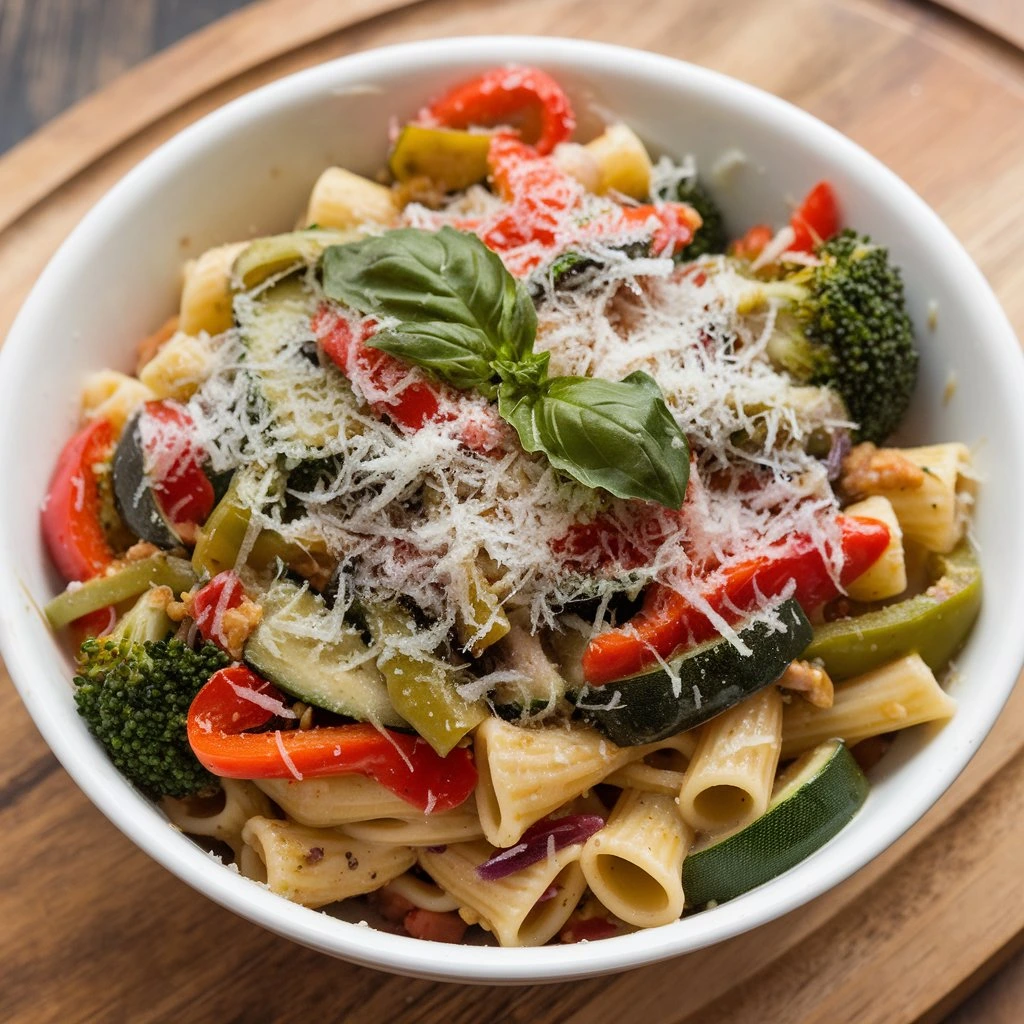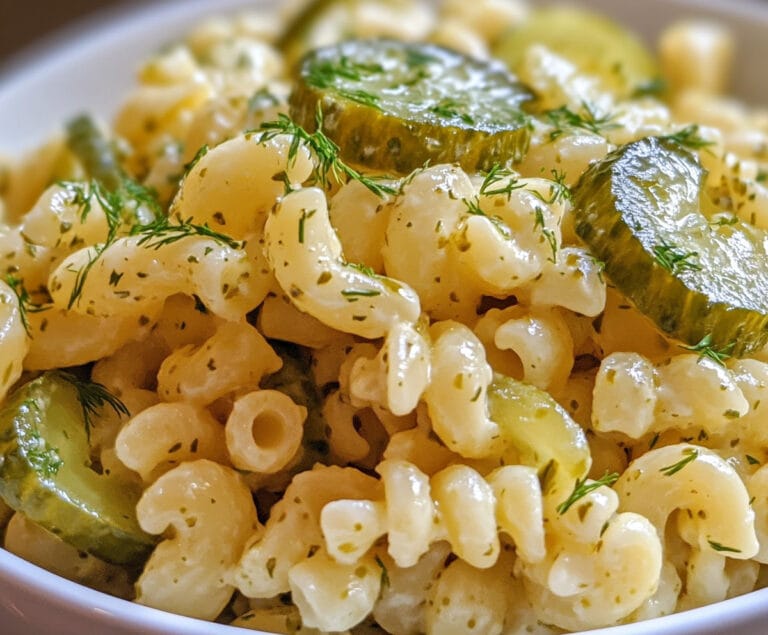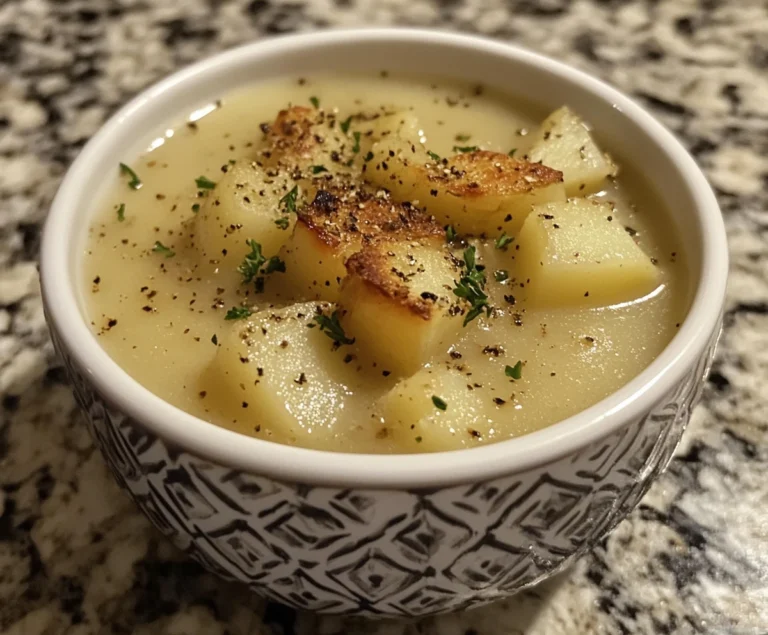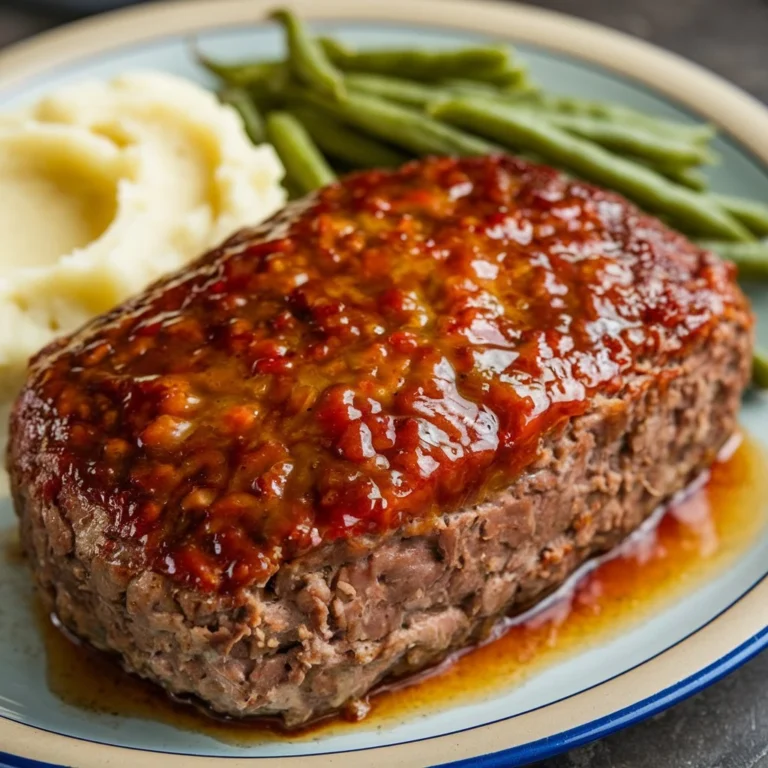Why is it called Pasta Primavera?
Why is it Called Pasta Primavera?
Pasta Primavera is a delightful pasta dish known for its vibrant mix of fresh vegetables and light sauce. Although the name sounds Italian, this dish originated in America during the 1970s and became a symbol of fresh, vegetable-based pasta dishes. This article explores its origins, the meaning behind its name, and why it continues to captivate food lovers. Additionally, we’ll examine how reflects a shift in American dining toward lighter, healthier meals while maintaining its Italian roots.
This journey not only follows the dish’s rise in popularity but also considers the seasonal importance of its ingredients, providing readers with the historical and culinary significance of Pasta Primavera.
What is Pasta Primavera?
To understand, let’s first explore what it is. This dish combines pasta (often spaghetti, fettuccine, or penne) with fresh, lightly sautéed or steamed vegetables. These vegetables can vary, but often include:
- Asparagus
- Zucchini
- Bell peppers
- Carrots
- Peas
- Broccoli
The dish is tossed in a light cream or olive oil-based sauce, often enhanced with garlic and cheese. The result is a bright, flavorful meal with a springtime essence, which its name reflects.
Chefs in Italian cuisine often emphasize the use of fresh, seasonal ingredients, and Pasta Primavera fits this principle perfectly. Although it is an American creation, the dish captures the essence of Italian cooking by allowing fresh vegetables to shine. The ingredients used in Pasta Primavera symbolize the light, refreshing qualities associated with springtime.
Origins of the Name
The name “spring” in Italian, a clear reference to the dish’s focus on springtime vegetables. But how did Pasta Primavera become a renowned dish in the U.S.?
In 1975, renowned New York restaurateur Sirio Maccioni visited the summer home of Baron Carlo Amato on Roberts Island, Nova Scotia. During this retreat, Maccioni and his chefs experimented with the fresh produce available and created a dish that combined pasta with vegetables and a cream-based sauce. This dish would later be served at Le Cirque, Maccioni’s prestigious New York City restaurant.
Pasta Primavera gained widespread fame after Craig Claiborne of The New York Times published a review of it in 1977, including the recipe. This exposure quickly made it the talk of the town, and soon restaurants across the U.S. started adding it to their menus. Learn more about the rise of Pasta Primavera here.
The Disputed Origins
Although Sirio Maccioni and Le Cirque popularized the dish, others have laid claim to its invention. Several chefs and food historians argue that they played a part in creating
- Edward Giobbi, an amateur chef and artist, insists that he showed Maccioni a similar vegetable-based pasta dish during a casual cooking session.
- Franco Brigandi, a chef from New York, claims he made the dish for a TV host before it appeared at Le Cirque.
- Even within Le Cirque, disagreements arise. Jean Vergnes, the restaurant’s head chef, reportedly refused to serve pasta, forcing Maccioni to prepare the dish out of sight.
While the exact origin of Pasta Primavera remains a matter of debate, its rise to fame is credited to Le Cirque and the publicity it received. Since then, chefs worldwide have adapted the recipe and made it their own. Explore more Italian-inspired dishes here.
The Cultural Significance
The rise of Pasta Primavera in the late 1970s coincided with significant changes in American dining habits. During this period, Americans showed an increasing interest in healthier, lighter foods, especially in urban areas like New York City. Heavy, meat-rich meals started to lose appeal as more people embraced vegetable-forward dishes.
Pasta Primavera tapped perfectly into this trend. Its fresh vegetables and light sauce made it a healthier alternative to traditional Italian-American pasta dishes like lasagna and spaghetti with meat sauce. The dish quickly became a symbol of the shift toward lighter, healthier dining.
Additionally, Pasta Primavera blended Italian and American culinary traditions. Although not a traditional Italian dish, it used Italian ingredients and techniques, such as fresh vegetables, pasta, and light seasoning. The dish represented a modern twist on Italian cuisine, adapting it to the evolving tastes of American diners.
By introducing Pasta Primavera, chefs not only met the growing demand for healthier food but also helped popularize Italian-American fusion cuisine. Discover more Italian-American dishes here.
Why is it Called
The name Pasta Primavera perfectly describes its defining characteristics. “Primavera” is the Italian word for spring, and the dish revolves around fresh, spring vegetables such as asparagus, peas, and zucchini.
Using an Italian name helped make the dish more appealing to American diners in the 1970s, who were already embracing Italian cuisine. Italian dishes like spaghetti and lasagna were already household names in the U.S., and Pasta Primavera fit perfectly into this growing trend. The name gave it a sense of authenticity, even though it was created in New York.
The Evolution Over Time
Since its creation, chefs and home cooks have adapted Pasta Primavera in many ways. As a flexible dish, it allows for numerous variations depending on personal taste, dietary preferences, and seasonal availability.
Common Variations of Pasta Primavera:
- Adding Protein: Many modern versions of Pasta Primavera include protein such as chicken, shrimp, or tofu. This change adds more substance to the dish, making it a more filling meal without overpowering the flavors of the vegetables.
- Changing the Sauce: While the original dish featured a cream-based sauce, many variations today use a lighter sauce made from olive oil, garlic, and lemon juice. This olive oil-based version provides a healthier alternative, appealing to diners looking for a lighter option.
- Vegan and Gluten-Free Versions: In response to modern dietary trends, chefs have created vegan and gluten-free variations . These versions often replace dairy with plant-based cream alternatives and use gluten-free pasta.
- Seasonal Adaptations: The dish adapts well to different seasons. While the original Pasta Primavera uses spring vegetables, chefs often substitute summer produce like tomatoes, corn, and squash, or fall ingredients like butternut squash and kale.
- Baked Versions: Some chefs have developed baked versions of Pasta Primavera, adding ingredients like breadcrumbs or cheese to create a crispy topping. These versions have a heartier texture and are especially popular in cooler months.
Pasta Primavera’s versatility has helped keep it relevant for decades. By allowing for experimentation with ingredients, sauces, and preparation methods, it has become a favorite both in restaurants and home kitchens. Explore seasonal recipes that incorporate fresh vegetables.
Seasonal Ingredients
One of the defining characteristics is its reliance on fresh, seasonal ingredients. The vegetables used are typically spring vegetables, harvested at their peak during Primavera (spring).
Seasonality plays a crucial role in Italian cooking. Italian chefs often design their dishes around what is freshest and most readily available. By focusing on seasonal ingredients, Pasta Primavera honors this tradition, even though it was created in America.
Common Spring Vegetables in Pasta Primavera:
- Asparagus: Tender and mild, asparagus complements the dish’s other vegetables perfectly. It’s one of the first vegetables to emerge in spring.
- Peas: Fresh peas add sweetness and a pop of color to the dish. In Italy, peas often feature in classic spring dishes like risotto.
- Zucchini: Versatile and mild-flavored, zucchini adds texture and freshness. It’s abundant in both spring and summer.
- Bell Peppers: Although bell peppers are not typically spring vegetables, they add vibrant color and sweetness. Chefs often include them for their visual appeal.
Focusing on seasonal ingredients not only enhances the dish’s flavor but also reduces its environmental impact by minimizing transportation. This emphasis on freshness is part of what makes Pasta Primavera a timeless favorite. Discover more fresh, seasonal vegetable recipes.
Frequently Asked Questions About Pasta Primavera
1. Is Pasta Primavera Italian or American?
Pasta Primavera is an American creation with Italian influences. Though chefs in New York invented it, the dish draws on the principles of Italian cooking, such as using fresh, seasonal ingredients.
2. What vegetables are traditionally used in Pasta Primavera?
Traditional ingredients include pasta, asparagus, zucchini, peas, and bell peppers. However, chefs often adapt the vegetables based on what is in season or available locally.
3. Can you add protein ?
Yes! Many people add chicken, shrimp, or tofu to their . This makes the dish more filling without taking away from the fresh flavors of the vegetables.
4. Why is it called ?
“Primavera” means spring in Italian, referencing the dish’s use of fresh spring vegetables. This name perfectly captures the light, seasonal quality of the dish.
5. Is Pasta Primavera healthy?
Yes! Pasta Primavera is typically light and packed with vegetables, making it a healthy option. Using an olive oil-based sauce instead of cream can make the dish even healthier.
6. Can you make Pasta Primavera gluten-free or vegan?
Absolutely! Many gluten-free and vegan variations exist. You can substitute traditional pasta with gluten-free versions and use olive oil or plant-based cream for a vegan option.
Conclusion
Pasta Primavera has become a beloved dish, representing the fusion of Italian and American culinary traditions. What began as an experiment by Sirio Maccioni in the 1970s has evolved into a symbol of light, healthy dining. Chefs and home cooks alike have adapted it to fit modern tastes, and its versatility ensures that Pasta Primavera will remain a favorite for years to come.
Whether you enjoy the classic recipe or experiment with your own variations, Pasta Primavera perfectly captures the essence of fresh, seasonal produce and Italian simplicity. Discover more ways to incorporate seasonal vegetables into your cooking.







